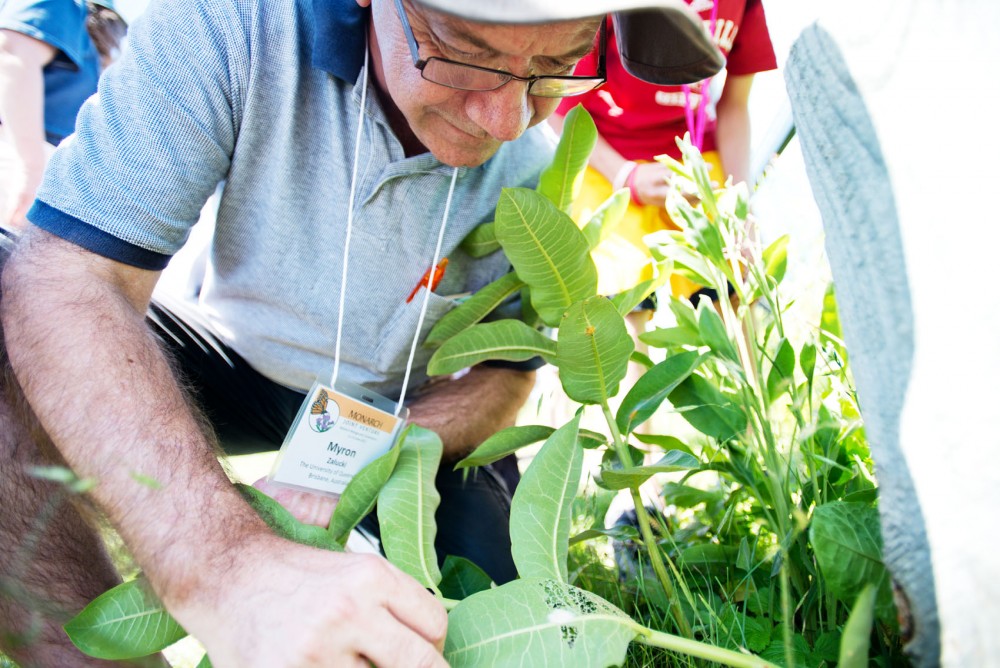Eighth-grader Katie Marusich knelt in a meadow to examine a milkweed plant, clipboard in hand.
“I really enjoy science,” she said. “Sometimes it’s hard. You don’t know all the answers.”
But she knew enough to impress renowned experts and scientists when they tested her insect knowledge at the Monarch Biology and Conservation Meeting last weekend.
More than 150 people from around the world gathered for the meeting, held at the Minnesota Landscape Arboretum, to share new information on global monarch butterfly populations. This is the fifth conference of this kind since it began in 1981, and the first to be held in Minnesota.
Karen Oberhauser, the head of the University of Minnesota’s Monarch Lab, wanted the conference to be accessible for a broad audience, including “citizen scientists” like the seventh- and eighth-graders — like Marusich — who participate in the University’s Driven to Discover program.
“It’s just a wonderful opportunity for the students to learn from the most famous biologists and for the biologists to see what the students are doing,” Oberhauser said.
She started the Driven to Discover program 16 years ago to engage students in scientific research. It is currently in its third year of a five-year grant from the National Science Foundation.
In the last three years, about 300 students have participated by collecting data that scientists have used in 15 research publications.
The knowledge and methodology Marusich learned in the program surprised the seasoned scientists at the conference. Lincoln Pierson Brower, an award-winning biologist who has been studying monarchs for 58 years, said he was impressed by how detailed her data sheets were.
“That’s very similar to what we do,” he said.
Program participants also design and perform their own research projects, which they presented at the meeting on tri-fold poster boards.
Marusich’s project from last year studied which flowers monarchs would pollenate based on color, scent and nectar sugar content.
Professional scientists also presented their research at the meeting. Héctor Leonardo MartÃnez Torres, a researcher from Mexico, studies rural communities’ fire use and management in the Monarch Butterfly Biosphere Reserve.
Monarchs migrate to the MBBR, which is located west of Mexico City, during the winter. In 1980, Mexico made it a protected area where fire is illegal, but many of the local people need to use fire for agriculture, he said. MartÃnez is currently working on earning the trust of the local people before he can start his research, which he said makes it more difficult to study.
“It’s different in terms of agriculture and culture in Mexico,” MartÃnez said.
Most of the students said they did not know whether they would go into science professionally, since it was too early to decide. Marusich said she might.
A highlight of the meeting for the butterfly enthusiasts was a preview of the movie, “Flight of the Butterflies,” which premiers in October.
The movie follows the monarch migration to Mexico, and tells the story of how Fred and Norah Urquhart discovered the MBBR in 1975. Oberhauser was on the panel that made sure the movie was biologically accurate.
She said she tries to incorporate outreach into all of her work because she sees the difference her research can make.
“I feel like too many scientists do their research kind of in a bubble,” Oberhauser said. “They don’t really see the impact it can have on the rest of the world.”


